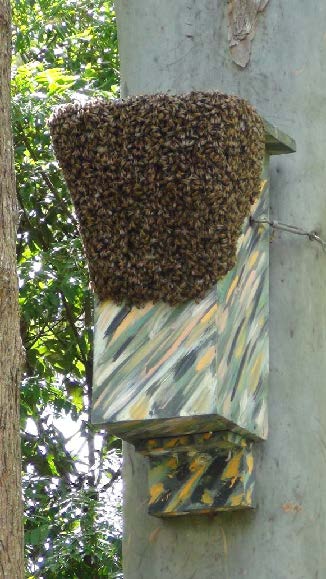
Feral honey bee Apis mellifera colonies are wide-spread globally and cause ecological impacts as pollinators and competitors for food and nesting opportunities. The magnitude of impact depends on their population density, but knowledge of this density is poor. A recent article by Saul Cunningham and colleagues documents feral A. mellifera colonies at 69 per km2 in fragmented Eucalyptus woodlands in Australia, exceeding estimates from elsewhere in the world, and matched only by one other Australian study. They surveyed 52.5 ha of woodland patches with 357 nest box-es installed to provide nesting opportunities for threatened vertebrates. The sites covered a region of more than 140 km across with repeated surveys over 3 to 6 years. At 69 colonies per km2, this density is equivalent to the recommended stocking of hives for pollination of some crops and is therefore likely to influence pollination and lead to competition with other flower visitors. Apis mellifera is also likely to be competing for hollows with cavity dependent native fauna, especially in landscapes where there has been extensive tree removal. Find the full article here:
https://www.nature.com/articles/s41598-022-07635-0
Citation: Cunningham, S.A., Crane, M.J., Evans, M.J. et al Density of invasive western honey bee (Apis mellifera) colonies in fragmented woodlands indicates potential for large impacts on native species. Scientific Reports 12, 3603 (2022).
